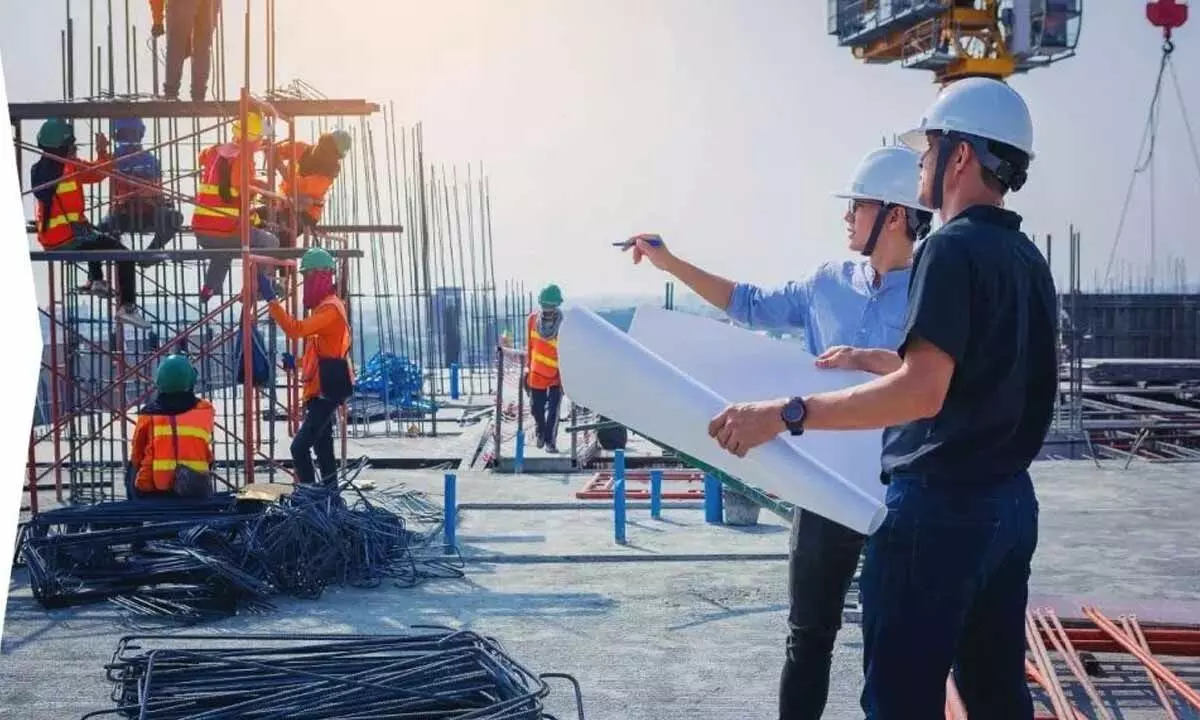Key construction sector trends in 2023

Key construction sector trends in 2023
The global construction industry's future looks promising, with opportunities in residential, non-residential, and infrastructure sector.
The global construction industry's future looks promising, with opportunities in residential, non-residential, and infrastructure sector. The global construction industry is expected to reach $10.5 trillion by 2023, growing at a CAGR of 4.2 per cent between 2018 and 2023. The major drivers of this market's growth are rising housing starts and rising infrastructure as a result of increasing urbanisation and population growth.
Emerging trends that have a direct impact on the dynamics of the construction industry include a rise in the need for green construction to reduce carbon footprint, bridge lock-up device systems to improve structure life, building information systems for efficient building management, and the use of cutting-edge technologies. Let us look at some of them in detail.
Robotics
Robots are making a difference in a variety of industries, from agricultural production to medicine. These high-tech machines have also transformed the construction industry. Robots could assist construction projects to stay on track and under budget. However, interested businesses must investigate which machines are most appropriate for assisting with time-consuming or labor-intensive tasks.
Green Building
The construction industry contributes significantly to fossil fuel emissions, which contribute to climate change. Building operations and construction account for nearly 40 per cent of global energy-related CO2 emissions. However, as global awareness of the severity of climate change grows, the construction industry is taking concrete steps to reduce its environmental impact. Industry leaders are looking for ways to reduce material waste from demolitions, switch to eco-friendly building materials, and choose locally sourced building products. Construction clients are also investing in companies that provide the sustainable, environmentally friendly practises they seek.
Remote worksites
Construction firms navigated strict safety protocols while maintaining productivity throughout 2020. Mobile construction apps have enabled the industry to expand while keeping workers, clients, and contractors safe. As we approach 2023, construction companies recognise the value of remote work sites and mobile access to their bottom line. Many phases of construction can be completed remotely, saving both the builder and the client time and money. More technological advancements that enable work to be done offsite are expected, allowing projects to be finished faster than ever before.
Modular design
Modular construction is rapidly becoming a preferred approach of constructing in the construction field. A modular building is built offsite and then assembled on-site. This process allows for a faster construction schedule, a greener building process, and smarter design. The modular building process also produces less waste. Building crews can recycle used materials and keep track of inventory. Furthermore, the buildings can be refurbished or relocated, reducing the amount of energy and materials required for a new project. According to projections, the modular construction market will be worth up to $157 billion by 2023.
Use of rented equipment
Construction companies will continue to consider renting equipment or purchasing used merchandise rather than purchasing new items. Both of these options are construction industry trends for 2023 because they allow businesses to keep up with technological advancements at lower costs. Rented equipment, in particular, allows construction companies to test whether different machines deliver the expected results.
Conclusion
As can be seen, 2023 is shaping up to be a fantastic year for construction. With technological advancements and high demand for services, the only way to go is up. With an emphasis on rebuilding infrastructure, sustainable buildings, and smart cities, construction companies that embrace the industry's changing landscape will have more opportunities.
(The author is the Founder, SapceMantra)

















